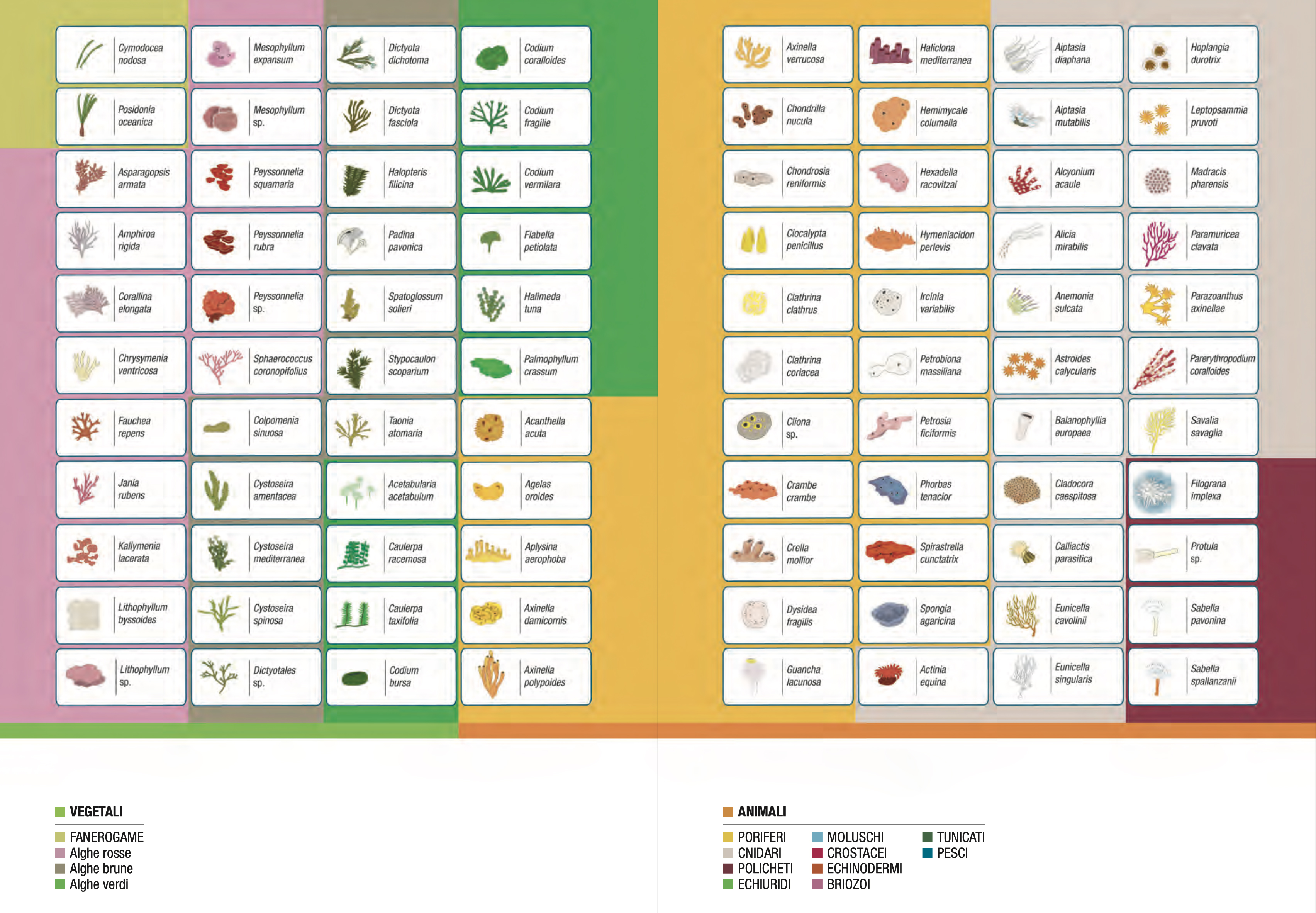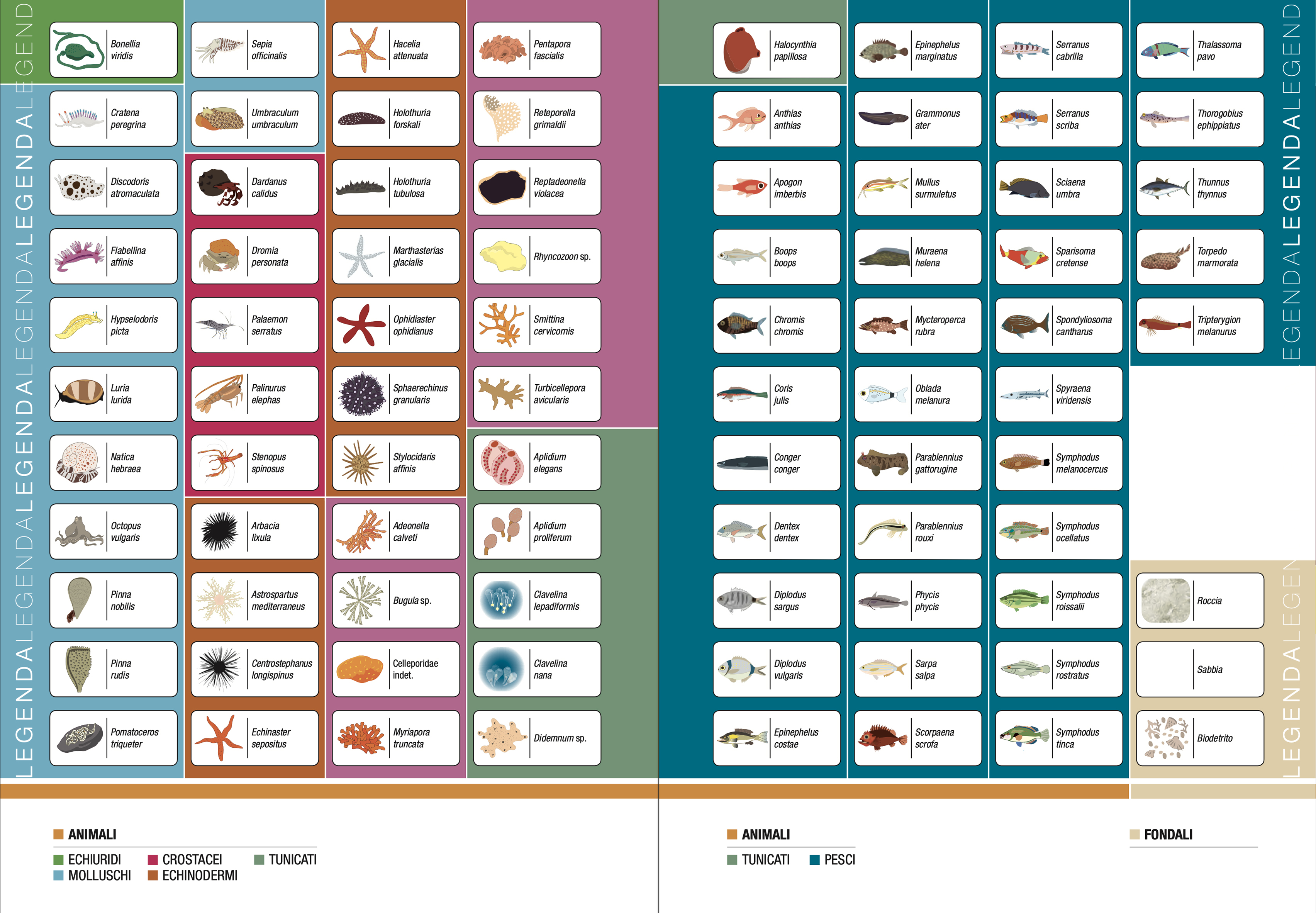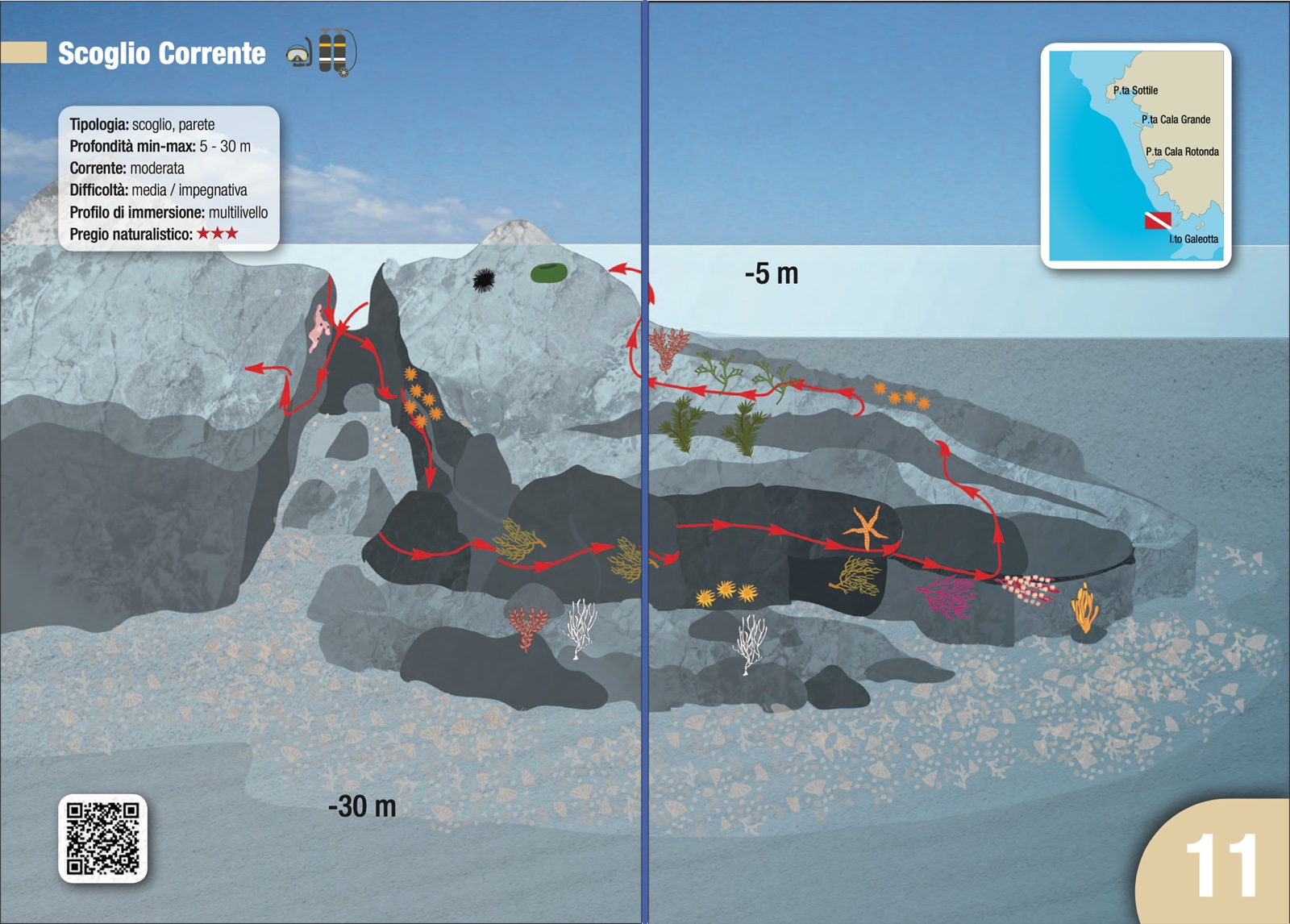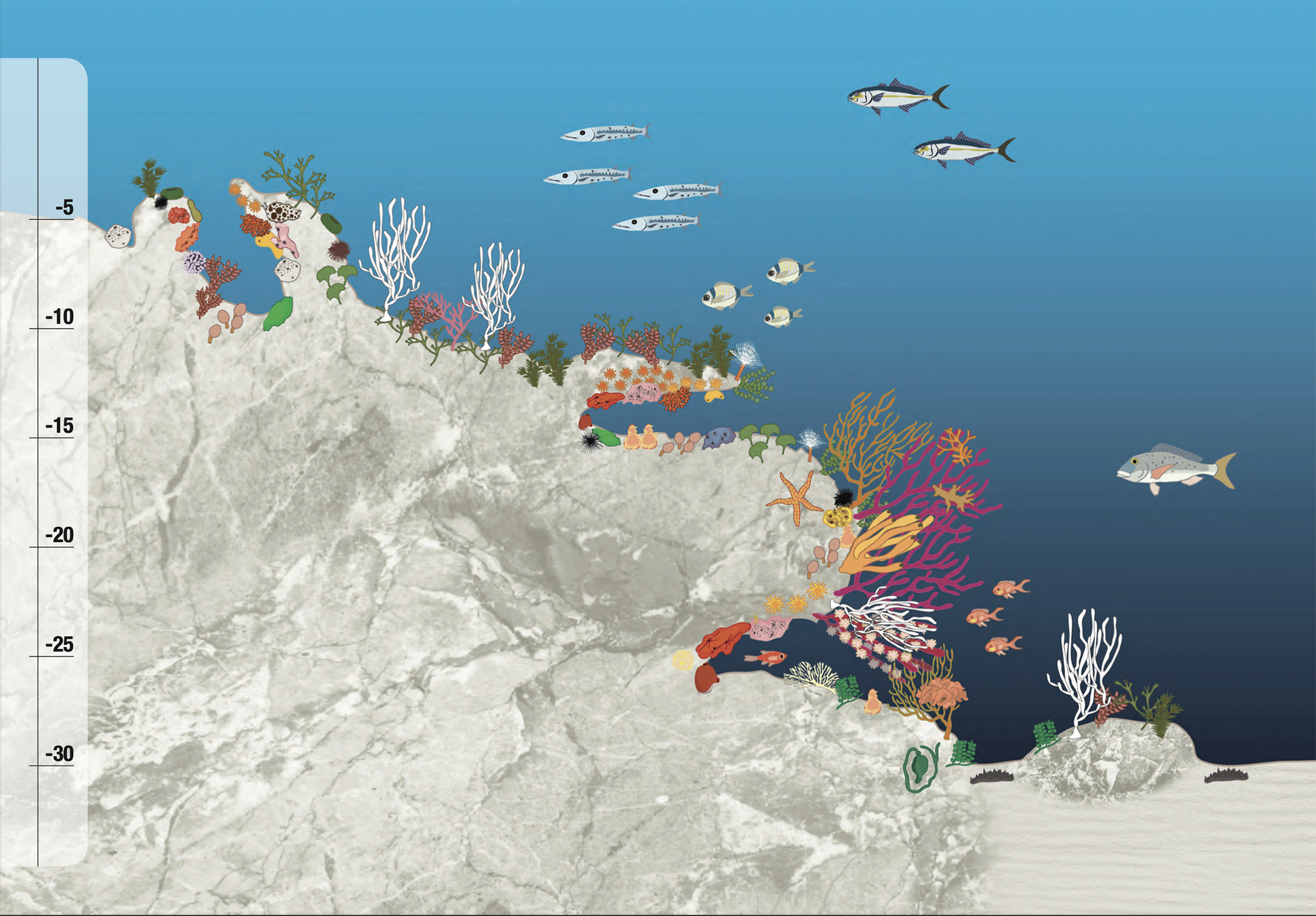Site 11 - Scoglio Corrente
The Scoglio Corrente offers diving routes to appreciate different landscapes, such as submarine valleys between outcrops of dolomitic limestone from the Upper Triassic (around 200 million years ago), walls rich in life, ravines and burrows. The top part is also suitable for snorkelling. The dive route starts at a depth of 5 m, from where, down to about 12 m, you travel through a short but colourful valley whose rocky walls are covered by the orange colonial madrepores (Astroides calycularis), yellow sponges (Agelas oroides, Clathrina clathrus), among which protrude red saplings of the false coral (Myriapora truncata). On the sponge Petrosia ficiformis can be seen specimens of the nudibranch known as the 'sea cow' (Discodoris atromaculata ). In open water, specimens of barracuda (Sphyraena viridensis), amberjack (Seriola dumerili) and dentex (Dentex dentex) can be seen. The rocks at the foot of the submerged valley show a rich algal cover in the illuminated portions, while the shadier sides provide substrate for urchins (Arbacia lixula, Paracentrotus lividus), encrusting sponges (Crambe crambe, Phorbas tenacior) and the beautiful tunicates Aplidium elegans and A. proliferum. Keeping the wall to the left, one can observe the yellow gorgonian (Eunicella cavolinii), large fans of the red gorgonian (Paramuricea clavata) and a rich benthic layer below. Inside the crevices one can recognise yellow madrepores (Leptopsammia pruvoti), numerous species of massive, encrusting sponges, and colonies of orange bryozoans (Smittina cervicornis, Pentapora fascialis, Turbicellepora avicularis). Mullet kings (Apogon imberbis) and red damselfish (Anthias anthias) are also abundant. On the bottom, at a depth of about 30 m, white gorgonia (E. singularis) can be found on the rocks, on whose branches the alcyonarians Parerythropodium coralloides can be found. The algae often hide the black-spined sea urchin (Centrostephanus longispinus).
Legenda:


-
Information
-
Contacts

